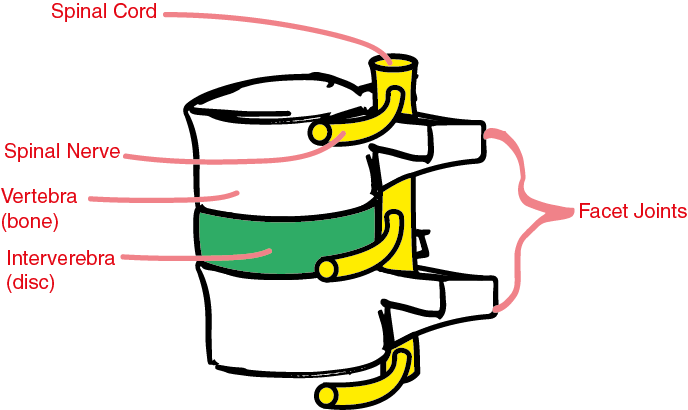The human spine knows 24 separate vertebrae, excluding the sacrum (one piece of five merged vertebrae) and the coccyx or tailbone (one piece of four merged vertebrae). It is usually divided into three parts, namely: the cervical vertebrae (of which there are 7), thoracic vertebrae (of which there are 12) and the lumbar vertebrae (of which there are 5). In between the vertebrae there are invertebratal discs which are made up of an outer ring (annulus fibrosus) and a slow liquid inside it (n ucleus pulposus). [1]
ucleus pulposus). [1]
Along the full length of the vertebral column (spine) runs the spinal cord which, together with the brain, makes up the Central Nervous System (CNS). This bundle of nervous tissue makes sure signals from the brain are send to the right parts of the body and vice versa. Along every vertebral bone the spinal cord is tapped into a spinal nerve leading to a part of the body (e.g. the legs, knees, feet, a.k.a the peripheral nervous system). The spinal cord is protected by acicular pieces of bone (the facet joints) that wraps around it, forming the spinal canal. [1][2]
[1] Butler, Ann B., and William Hodos. Comparative vertebrate neuroanatomy: evolution and adaptation. John Wiley & Sons, 2005. [2] Squire, Larry Squire; et al. (2013). Fundamental neuroscience (4th ed. ed.). Amsterdam: Elsevier/Academic Press. p. 628. ISBN 978-0-12-385-870-2.
